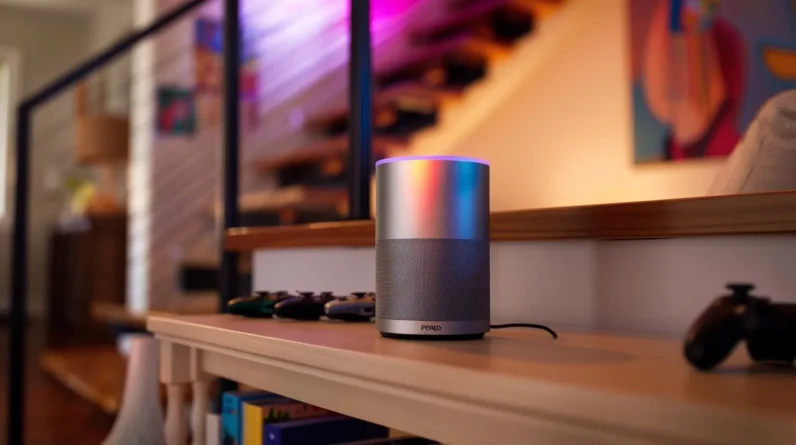
We consider a smart device family-friendly when it integrates seamlessly into our daily lives, providing a harmonious and safe environment for all household members. Key features include user-friendly interfaces, robust security measures, and customizable parental controls. We also look for devices with voice assistants that support multiple languages and dialects, as well as smart home systems that enable centralized control and automation. By exploring these features in more detail, we can better understand what makes a smart device truly family-friendly.
Key Features to Consider for a Family-Friendly Smart Device
When shopping for a family-friendly smart device, we need to take into account several key features that cater to the diverse needs of all household members. We should prioritize a user-friendly interface that is easy to navigate, even for younger or less tech-savvy users. A device with customizable settings and parental controls is also essential, allowing us to restrict access to certain features and set limits on screen time. Additionally, we should look for devices with robust security measures to protect our personal data and prevent unauthorized access. By considering these features, we can guarantee that our smart device is accessible, safe, and enjoyable for everyone in the family. This thoughtful approach enables us to create a harmonious and connected home environment.
Voice Assistants and Language Accessibility
How do voice assistants impact our experience with family-friendly smart devices? We rely on voice assistants to facilitate interaction, providing hands-free control and easy access to information. For smart devices to be family-friendly, we need voice assistants that cater to diverse user needs, including those with disabilities or language barriers. Effective voice assistants offer multilingual support and can understand various accents and dialects. They also provide clear, concise responses that are easy for users of all ages to comprehend. We look for devices with voice assistants that can adapt to our communication style, whether it’s through simple queries or complex conversations. By doing so, we can guarantee seamless interaction and maximize the device’s functionality. This makes a smart device truly family-friendly.
Smart Home Systems for Seamless Control
As we integrate more devices into our homes, an all-encompassing smart home system becomes essential for streamlining control and enhancing the overall user experience. We need a unified platform to manage and coordinate the various devices, ensuring they work seamlessly together. A robust smart home system allows us to centralize control, receive real-time updates, and automate tasks, making it easier to manage our homes. With a single interface, we can monitor and adjust lighting, temperature, security, and entertainment systems. Advanced smart home systems also enable voice control, scheduling, and remote access, providing unparalleled convenience. By investing in a comprehensive smart home system, we can create a more intuitive, efficient, and enjoyable living space for our families. This integration enhances our daily routines and makes our homes more comfortable and responsive.
Ensuring Online Safety and Parental Controls
We’ve established a solid foundation for our smart home with an all-encompassing system that streamlines control and enhances our living space. Now, we need to focus on ensuring online safety and implementing parental controls to protect our family. We must set up secure passwords, enable two-factor authentication, and configure firewalls to prevent unauthorized access. Additionally, we should utilize built-in parental control features or third-party apps to restrict content, set screen time limits, and monitor our children’s online activities. By doing so, we can prevent exposure to explicit material, reduce the risk of online predators, and promote a healthy online environment. This way, we can enjoy the benefits of smart technology while safeguarding our family’s well-being and digital security.
Durable Design and Device Longevity
A key consideration when investing in smart devices for our family is their ability to withstand the wear and tear of daily use. We need devices that can keep up with our kids’ energetic exploration and accidental drops. A durable design is vital to guarantee our devices can withstand rough handling. We look for devices with robust materials, such as scratch-resistant screens and sturdy casings. We also consider devices with water and dust resistance, which can help protect against accidental spills or splashes. Furthermore, device longevity is essential. We want devices that can remain functional for an extended period, reducing electronic waste and saving us money on frequent upgrades. By choosing devices built to last, we can minimize downtime and maximize enjoyment for our family.
Educational Value and Learning Opportunities
Our smart devices are more than just tools for entertainment; they’re also gateways to a world of learning opportunities. We can harness their power to provide our families with a wealth of educational content, from interactive apps and e-books to educational games and quizzes. By selecting devices with robust educational ecosystems, we can support our children’s learning and cognitive development. Additionally, many smart devices offer features that facilitate safe and controlled learning experiences for kids. We can set restrictions on content access, monitor activity, and receive progress reports to stay engaged in our child’s learning journey. By leveraging these capabilities, we can create a nurturing environment that fosters growth, creativity, and intellectual exploration. This enables us to make informed decisions about our child’s educational development.
Household Interoperability and Compatibility
While seamless communication between devices is often taken for granted, household interoperability and compatibility play a significant role in creating a cohesive smart home experience. We need devices that can work together seamlessly, understanding the strengths and limitations of each device and system. As we build our smart home ecosystem, we must consider devices that communicate using open standards and protocols, allowing them to exchange information and perform tasks efficiently. This enables voice assistants, smart speakers, and mobile apps to work together, providing a cohesive experience for the whole family. By focusing on interoperability and compatibility, we can create a harmonious and efficient smart home that streamlines our lives and makes managing our household easier. This integration is key to a truly family-friendly smart home.
Conclusion
We’ve explored the key features that make a smart device family-friendly, from voice assistants to durable design. Now, what’s the ultimate goal of having these devices in our homes? Perhaps the better question is: what kind of smart home experience do we want for our families? By considering factors like online safety, educational value, and household interoperability, we can create a seamless and enriching experience that benefits everyone in the household.







